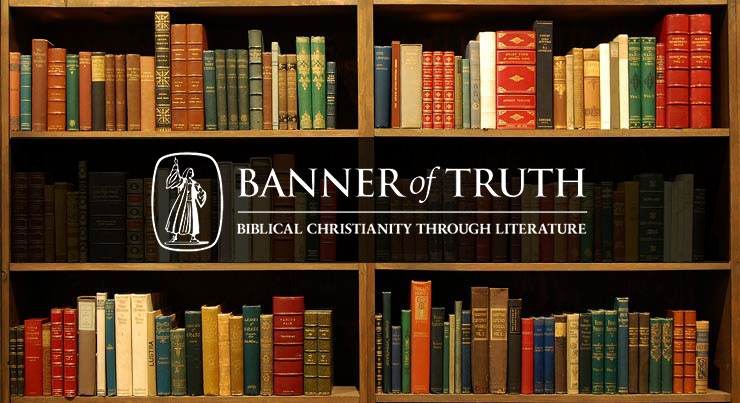Iain Murray is 86 years old. Sixty years ago today, along with Jack Cullum and Sidney Norton, officially founded Banner of Truth, the Reformed-evangelical publisher that began out of Westminster Chapel in London in 1957. It is headquartered today in Edinburgh, Scotland, with distribution offices in Carlyle, Pennsylvania.
Here is a 15-minute overview of the non-profit publisher’s history and distinctives:
The Banner’s website recounts some of the historical background:
By late 1956, Iain Murray was in London as an assistant to Dr Lloyd-Jones at Westminster Chapel. One of his duties was to take a Wednesday night meeting. Initially this meeting was to be a biblical exposition, but Lloyd-Jones changed this, and under his direction, Iain Murray was tasked with giving addresses on church history.
One of those who regularly attended these Wednesday night meetings was a businessman, Jack Cullum. In his forties, dark haired, and standing 6ft 4ins tall (1.93m), he was a distinguished-looking character. As he listened to the addresses on church history and heard of the way that God had worked in times past, learned of the people God had used and what they believed, he was prompted to meet with the speaker and ask how it was that this thrilling history of the church was so little known to contemporary Christians.
Iain Murray’s answer was that quite simply it was because the books that told of these things, that were so rich in information and teaching, were almost all long out-of-print and consequently known to very few. When in the recent past second-hand Puritan books had been available, no one had wanted them and therefore British publishers generally took the view that such old titles were unsaleable and not worth reprinting. To most publishers of the day, the emphasis of that literature was not congenial to much that passed for biblical Christianity in the twentieth century.
Religious publishing had become too market oriented; too driven by the question of whether a title was saleable and to what degree it could be expected to be popular and profitable.
Hearing this, Mr Cullum became convinced that the classics of historic biblical Christianity should be put back into print. He had seen considerable success in his business ventures, and in his new found conviction, he was prepared to put in the resources to make things happen and to start a publishing company. This was not uniformly approved of by his friends and advisors. One advised him that were he to put resources into publishing, especially the publication of literature so long unread and for which there was no known demand, then such a venture would last no longer than six months.
But Jack Cullum’s commitment to the vision that he had discussed and deliberated on with Iain Murray was strong, and so, on 22 July1957, a non-profit charity was formed, named The Banner of Truth Trust in continuity with the name of the magazine. The main objective in the trust deed, reflecting Mr Cullum’s vision, stated:
The object of the Charity is to promote in such parts of the world as the Trustees may decide the better knowledge and understanding of the doctrines of the Christian faith as taught by the Protestant Reformers and English Puritans.
From these early days, Dr Lloyd-Jones was a close advisor to the work of the new Trust, and contributed to the choice of the books to be published.
You can read the whole thing here.
Mark Dever, in an article trying to explain where all of these young Calvinists have come from in the 21st century, wrote about the focus and importance of the Banner:
Well-bound and attractively presented, no such editions of Reformed works from the English-speaking tradition had been popularly published for a century. Through consistently keeping key titles in print, carefully screening what would be published, word of mouth, huge 50% (or more) discounts for theological students, the Banner brought affordable, well-presented re-prints of classic works to a new generation. The libraries of our generation of ministers are filled with books written decades and even centuries earlier, newly re-printed. Some contemporary authors were published–not least of whom is Iain Murray himself. He has produced a series of productive works, uniting piety, theology and history, all in a popular style and with an eye to instructing and edifying the church.
But what was most exceptional about the Banner in the late 1950’s was its widespread distribution of literature from the past. The Princeton faculty teach us again through their books. Dutch Calvinsts and English Puritans appeared again. Readers were introduced to 19th-century divines (the Bonars, Charles Bridges). Furthermore, the Banner was in it for the long-term. They were theologically motivated. They were not put off publishing a work because it would not sell immediately. They gave time to allow an old classic to slowly disseminate through networks of Christians and fraternals of ministers. And their assiduous work in publishing in the 1950s and 1960s and 1970s has clearly helped to bring forth (and equip) a harvest in the 1980s and 1990s and still today.
I am grateful to God for this publisher and their decades of faithfulness. What a gift.


















